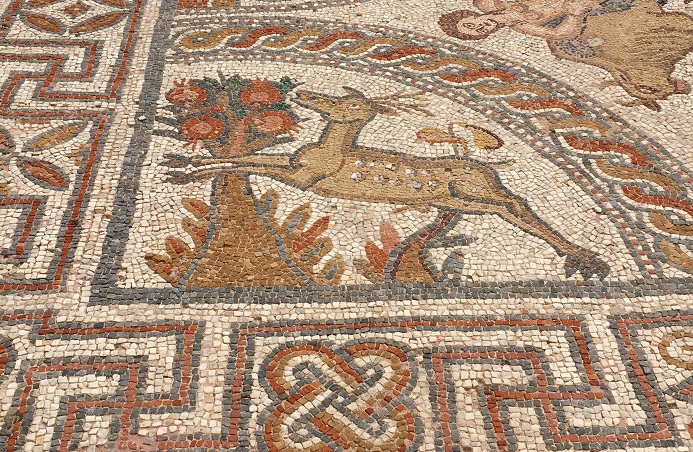
After a break to explore the north end of the island, Thor and I return to finish our tour of the ancient riches in Naxos Town’s archaeological museum.
NOTE: Since our recent trip to Greece to research more settings for my novel-in-progress, THE ARIADNE DISCONNECT, Thor and I knew we had to return to this magical region. My first entry in this new blog series posted here on Saturday, 10/20/2018. It gives an overview of our rambles from Athens to seven islands in the Dodecanese and Cyclades groups, ending our ferry-hopping pilgrimage on the anciently sacred island of Delos.
Fertile Naxos in the Cyclades Islands has been continuously occupied since at least 4000 B.C., and the Naxos Town (also called Hora or Chora) museum offers a lovely selection of artifacts from the Neolithic period through Roman occupation and early Christian influence. It’s housed in a Venetian building grafted onto earlier Frankish fortifications, including two stone towers. Built around 1700 A.D. for a Jesuit School, it claims Greek novelist Nikos Kazantzakis (author of the wonderful novel Zorba the Greek) as a student. Apparently he was rather rebellious against the rules….
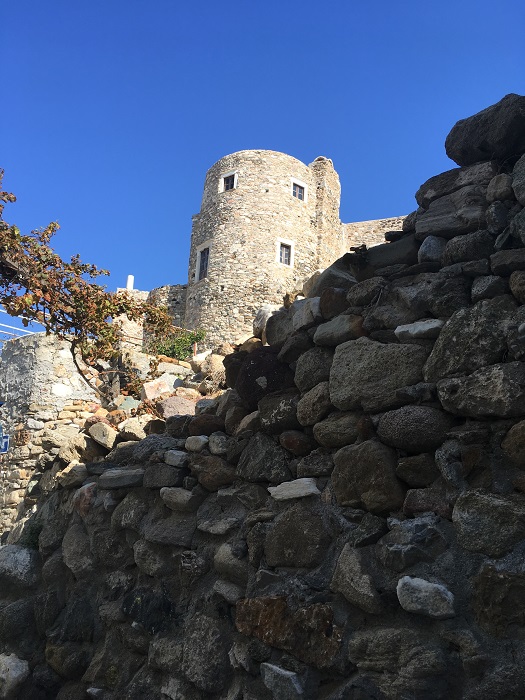
The somewhat shabby museum shelters a charming and valuable hodgepodge of artifacts from different ancient periods, notably the best collection of Cycladic marble figurines after that in the Athens museum. My blog post of June 15 featured Neolithic through Mycenaean finds, up to around the 11th century BC. Today we’ll start with the “Dark Ages” of Greek history from around 1100-750 BC, featuring the Geometric period of art. Note the ubiquitous “Greek key-wave” design on this vase:
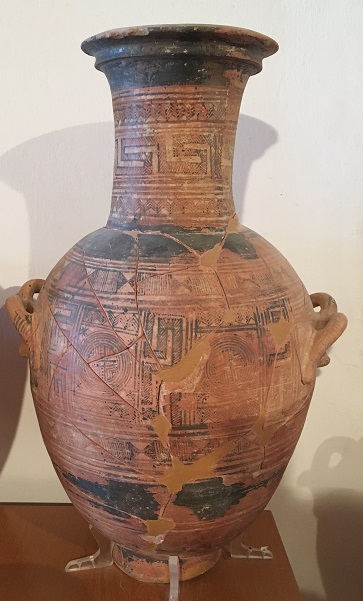
The Dark Ages represented a rather mysterious period in Greek history, as the museum explanation describes:
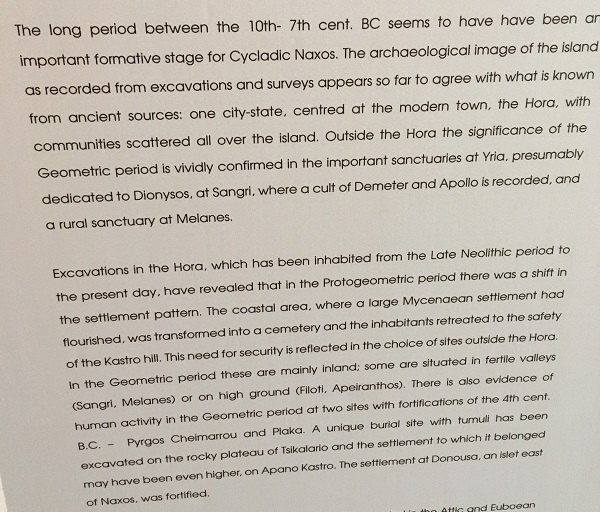
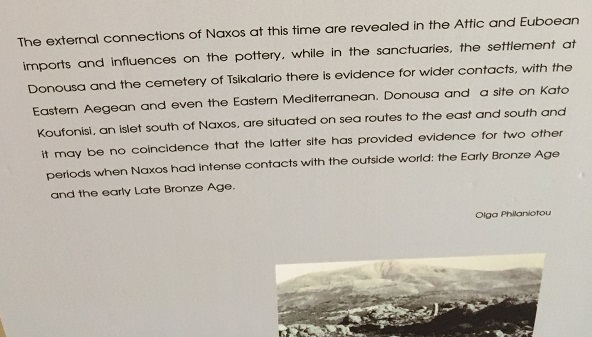
I wish there had been an explanation of these foot vessels from the period:
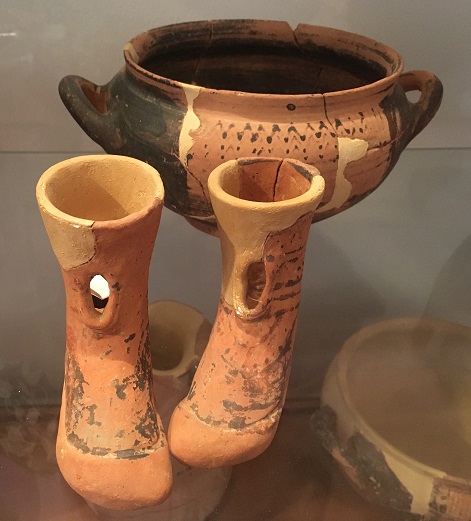
Moving into the Classical period, this lion tombstone dates from the 4th century BC:
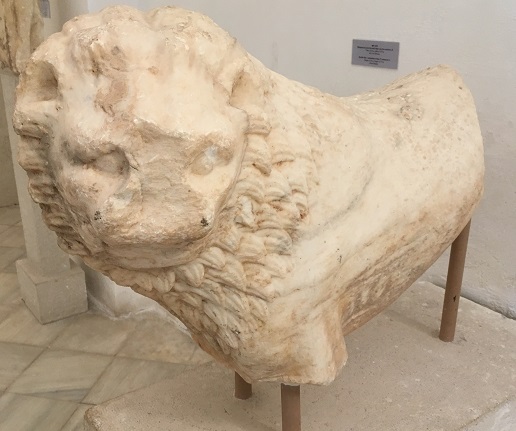
The enduring design of these oil lamps bridges the ages from the 6th century BC to 4th century AD:
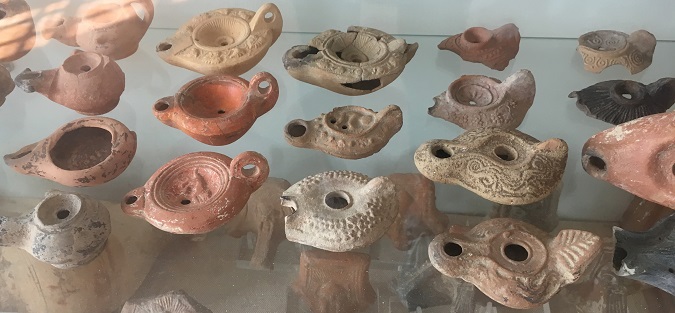
After the Classical period came the Hellenistic from around 350-150 BC, after the first Roman victory in Greece, and increasing influence. The trend was now toward “decadent art,” departing from the more severe Classical tropes in art and statuary. These “fire demons” are Hellenistic:
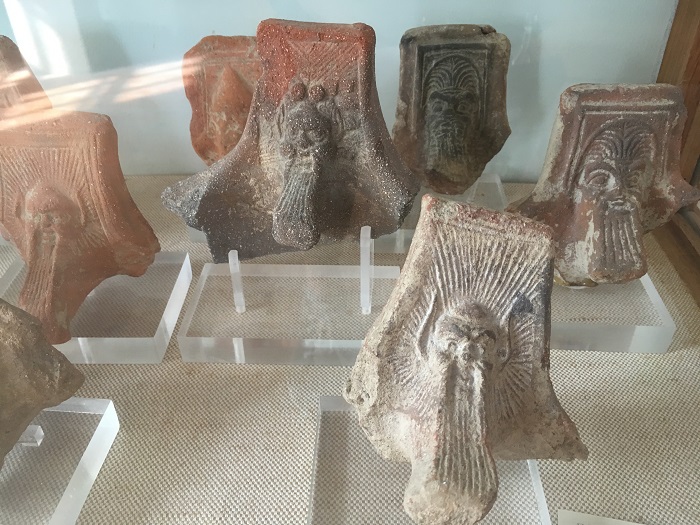
Most of the marble statuary in the museum (aside from the much earlier Cycladic figurines featured last time) appears to be from the Roman period starting around 150 BC.
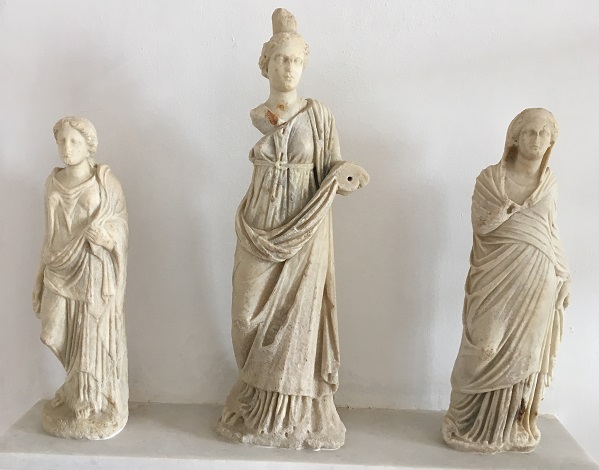
This woman’s garments portrayed the “dress of Isis”:
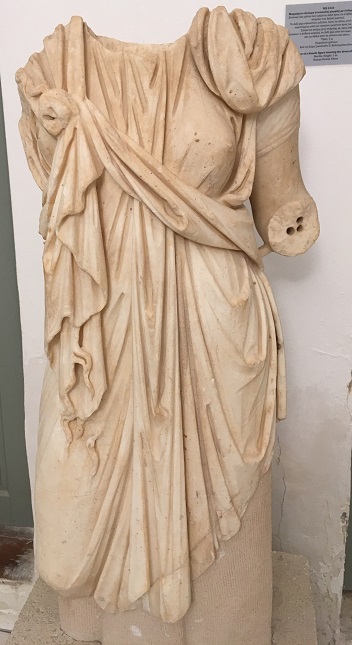
I always find the grave stele haunting, with their images of vanished lives, this one a youth:
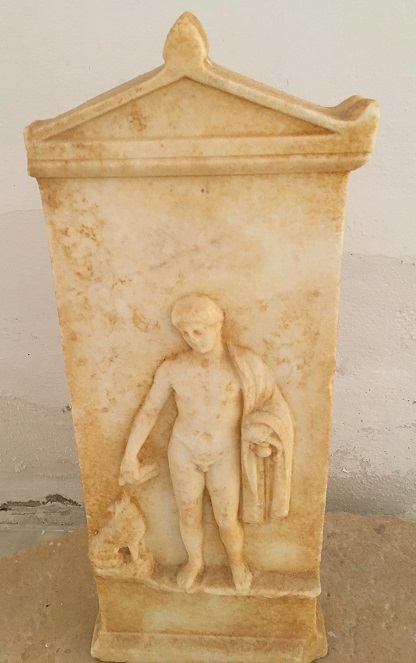

This stele features a seated woman making the stylized gesture of “apakalypse” or revelation:
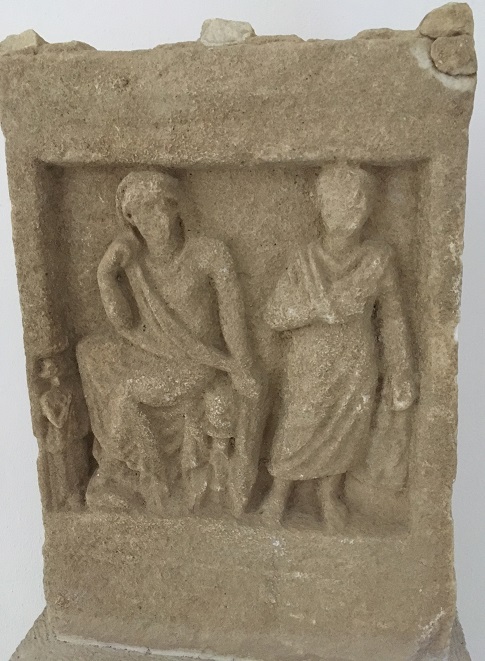
The more prosaic finds of bone tools of Roman life from graves of the 1st to 2nd centuries BC:
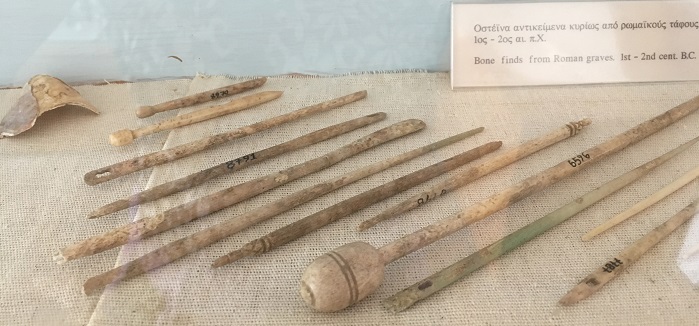

Lions attacking other creatures are a common subject; they must have been a dangerous threat in the islands as well as the mainland. This vivid carving is in two pieces:
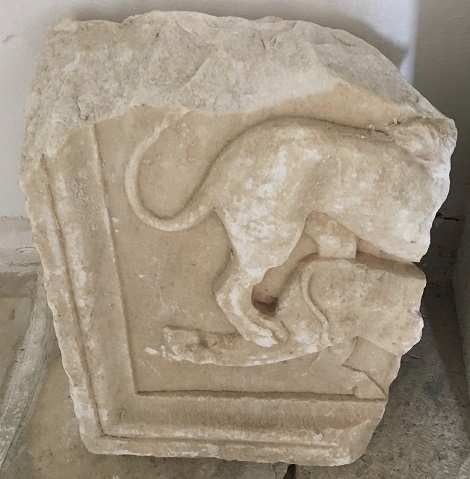
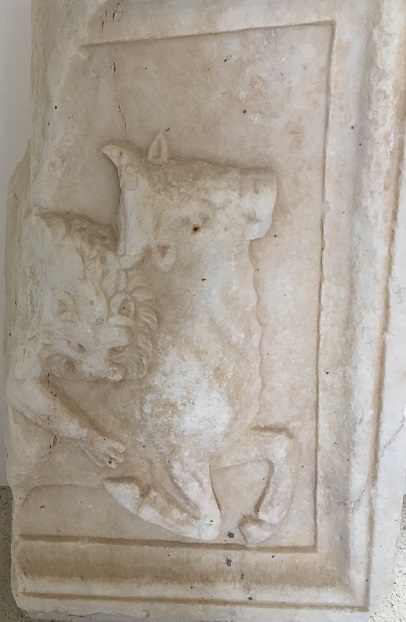
I’ve discussed before my fascination with the god of wine and ecstatic revelry, Dionysos. Naxos is where he found and married the abandoned Ariadne. They married and lived happily on the fertile island, raising several children. In my novel-in-progress, THE ARIADNE DISCONNECT, Dionysos is an underlying mythic inspiration for my character Peter. He and Ariadne will make part of their journey here on Naxos.
Which brings us to the popular Dionysian cult of the Romans. (We saw that also in previous blog posts about the island of Kos.) This Roman statue in the Naxos museum features a Roman general who fancied himself a godly incarnation, the “New Dionysos”:
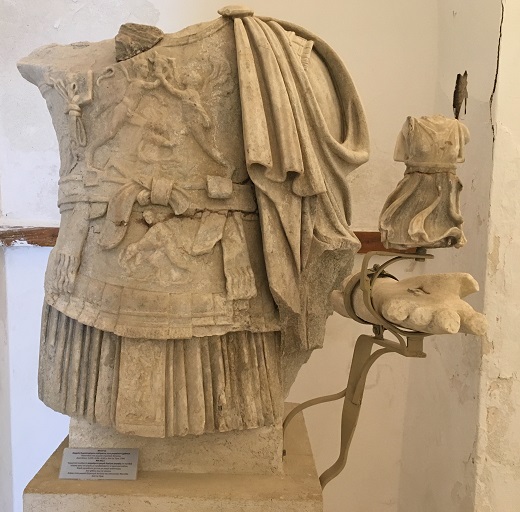
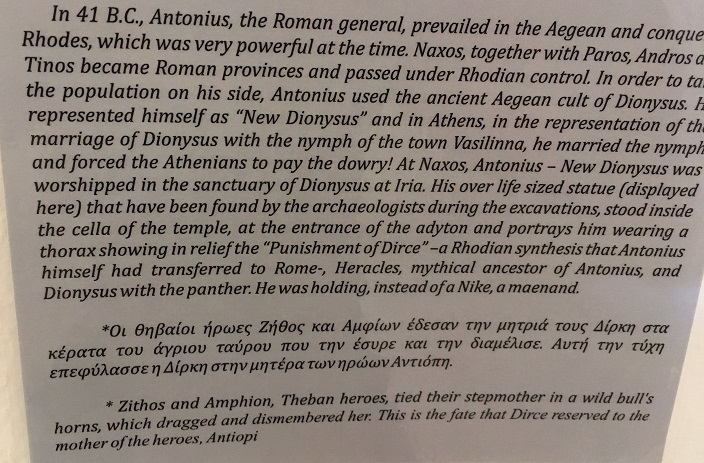
Hmmm, remind you of a certain delusional and power-mad would-be dictator holding sway at present?
It’s hard to pick a favorite feature of this wonderful collection, but it might be this fabulous mosaic floor from a 4th century AD Roman villa.
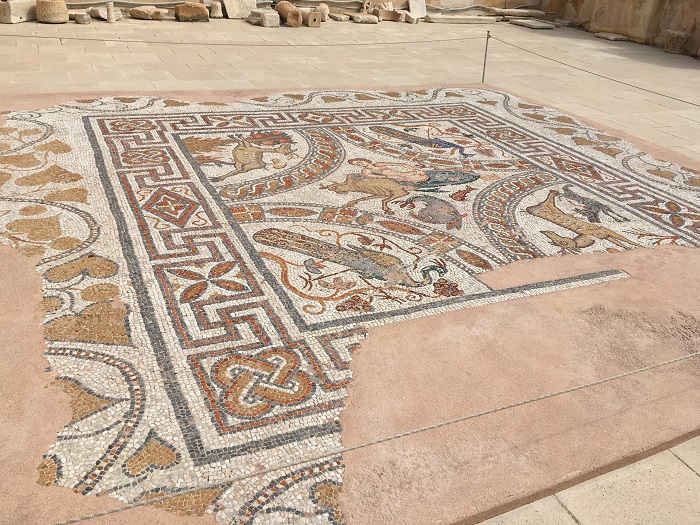
The mosaic is displayed in the open air of a large courtyard on the 4th floor of the building.

Comparing my photo of the mosaic to one on the museum’s website, I see that it’s been suffering damage since being installed here. Resources to protect all the many ancient treasures in Greece can be scarce, but I wish they could put a canopy over this beauty!
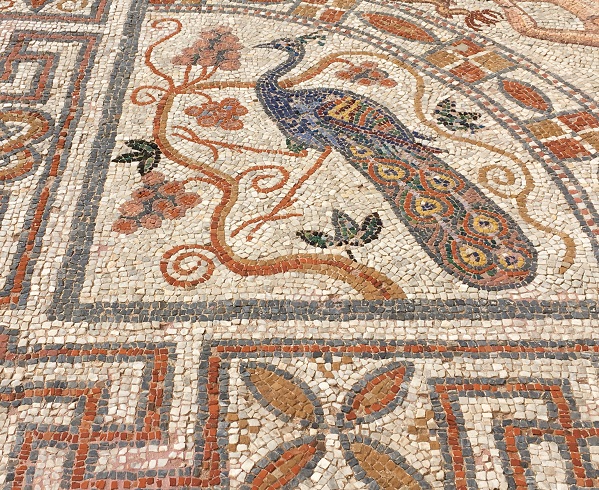
Part of the design features a Nereid (female sea spirit) riding a bullish sea monster. It’s possible the image might be related to the myth of Zeus transforming himself into a bull (yet again) to seduce the princess Europa, then swimming with her across the sea to Crete, where she bore him sons including the future King Minos. During the swim, they were accompanied by Nereids riding dolphins. But there are so many versions of these myths that it’s hard to pin down specific imagery.
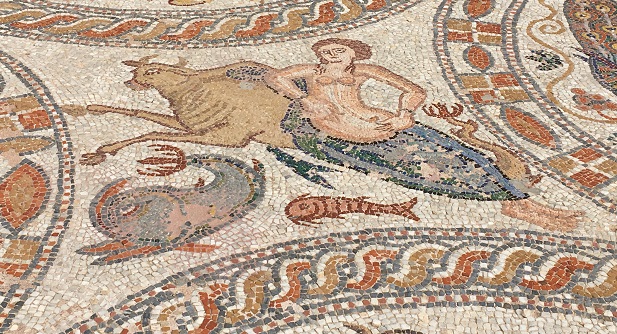
Next week: Thor and I explore a Venetian Tower adjacent to the museum, possibly the same tower depicted in this carved fragment:
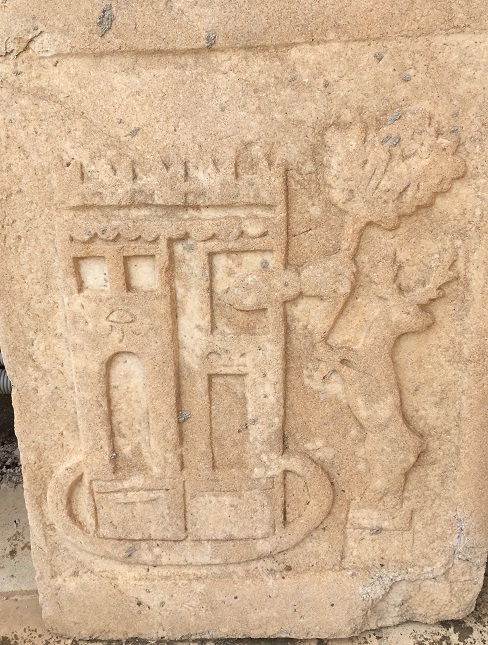
*****
You will find The Rambling Writer’s blog posts here every Saturday. Sara’s latest novel from Book View Cafe is available in print and ebook: The Ariadne Connection. It’s a near-future thriller set in the Greek islands. “Technology triggers a deadly new plague. Can a healer find the cure?” The novel has received the Chanticleer Global Thriller Grand Prize and the Cygnus Award for Speculative Fiction. Sara has recently returned from another research trip in Greece and is back at work on the sequel, The Ariadne Disconnect. Sign up for her quarterly email newsletter at www.sarastamey.com

1 thought on “The Rambling Writer Explores More Greek Islands, Part 30: Naxos Museum, continued”